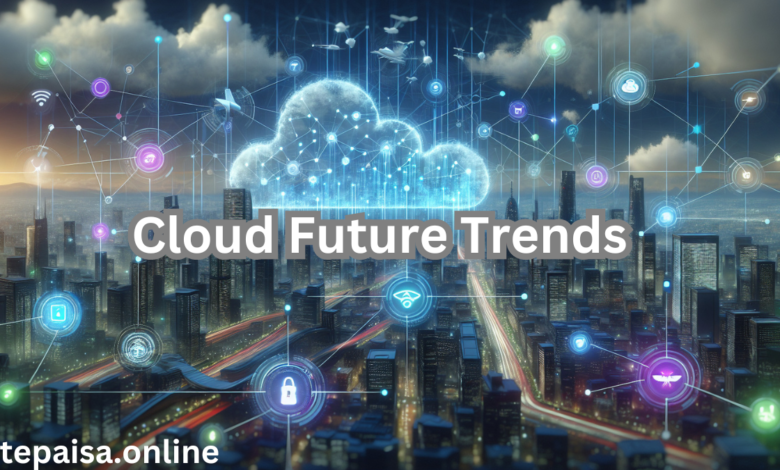
Cloud Future Trends As we look ahead to 2024 and beyond, are shaping up to be truly exciting. We’re witnessing a rapid evolution. From artificial intelligence integration to enhanced security measures, the cloud landscape is undergoing a significant transformation that’s catching the attention of tech enthusiasts and business leaders alike.
In this article, we’ll explore the key future trends in cloud computing that are set to make waves in the coming years. We’ll dive into the growing role of AI and machine learning, the rise of edge computing and its connection to IoT, the increasing popularity of multi-cloud strategies, and the ongoing focus on cloud security and compliance. Cloud Future Trends By understanding these trends, we’ll be better prepared to harness the power of cloud technology and stay ahead in an ever-changing digital world.
AI and Machine Learning in Cloud Future Trends Computing
As we delve into the future of cloud computing, we’re witnessing a remarkable integration of Artificial Intelligence (AI) and Machine Learning (ML) that’s reshaping the landscape. These technologies are not just add-ons but are becoming integral to cloud services, offering unprecedented capabilities and efficiencies.
AI-powered cloud services
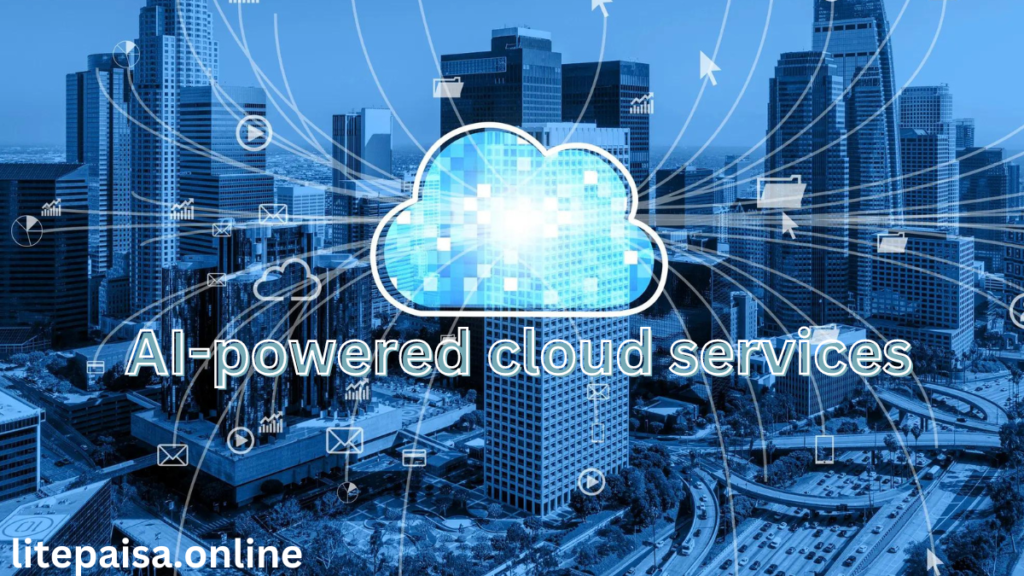
We’re seeing a significant transformation in how businesses operate with AI-enhanced cloud services. These services are streamlining workflows by automating repetitive tasks such as data processing, monitoring, and maintenance. This automation is reducing human error and freeing up our employees to focus on higher-value work.
One of the most noticeable changes is in customer interactions. AI-powered chatbots and virtual assistants are offering personalized support, enhancing our customer experiences. These tools are not just improving efficiency but also providing valuable insights through sentiment analysis, helping us understand customer emotions and attitudes towards our products or services.
Moreover, AI is revolutionizing data analytics in the cloud. We’re now able to analyze large datasets to forecast trends and patterns. Cloud Future Trends allowing us to make more informed decisions and optimize our operations. This predictive capability is also improving resource allocation, as AI can predict and adjust usage based on demand, resulting in cost reduction and enhanced performance.
Machine learning model training
The advancements in machine learning model training are particularly exciting. We’re seeing the emergence of specialized hardware like ML accelerators and AI chips that are significantly faster and more efficient than traditional processors. These innovations are crucial for handling data-intensive operations and large-scale data quality checks.
Cloud platforms are offering comprehensive environments for building, training, and deploying ML models at scale. For instance, AWS SageMaker and Google Cloud Vertex AI are providing tools that simplify the ML lifecycle from data preparation to model deployment. These platforms are enabling us to automate model tuning and workflow processes, making ML more accessible and efficient.
Natural language processing advancements Cloud Future Trends
Natural Language Processing (NLP) is another area where we’re seeing remarkable progress. The field is divided into two primary branches: natural language understanding (NLU) and natural language generation (NLG). NLU is enhancing machine comprehension of text, while NLG is enabling machines to produce human-like text responses based on input data.
We’re particularly excited about the advancements in conversational AI. These systems are becoming more sophisticated, improving how we interact with customers and employees across various sectors. The integration of large language models (LLMs) is marking a significant shift in tackling complex NLP tasks, enhancing our ability to understand and manipulate human language with greater accuracy and context.
As we look to the future, we anticipate further innovations in semantic and cognitive technologies. These advancements will likely enhance the human-like understanding of speech and text, allowing for more intuitive and intelligent applications across various domains. Cloud Future Trends The concept of invisible or zero user interface is particularly intriguing, potentially enabling direct interaction between users and machines through voice or text.
Edge Computing and IoT Integration Cloud Future Trends
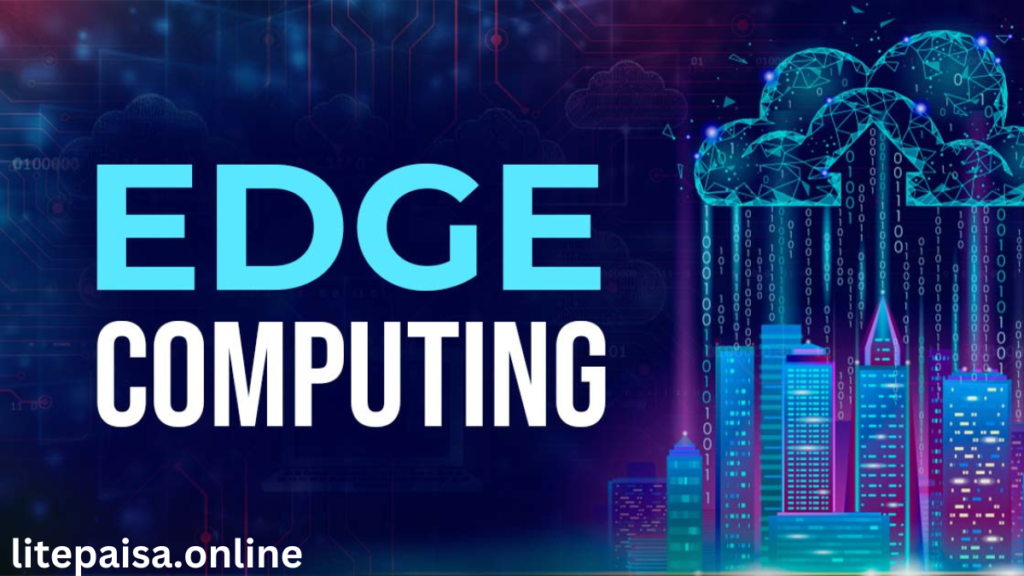
We’re witnessing a remarkable shift in how we process and analyze data with the rise of edge computing and its integration with the Internet of Things (IoT). This powerful combination is revolutionizing our approach to data management and real-time decision-making.
5G and edge computing synergy
The synergy between 5G and edge computing is transforming our digital experiences. By bringing data storage and computation closer to where it’s created, we’re seeing significant reductions in latency. This is crucial for applications that demand real-time responses, such as autonomous vehicles and industrial automation.
We’re particularly excited about how this combination enhances performance and promotes data security. For instance, 5G-connected drones can now inspect solar panels, wind turbines, and power lines for defects with unprecedented efficiency. In retail, we’re seeing the emergence of frictionless store checkouts, where an in-store edge network processes data from cameras using AI, allowing customers to leave the store without waiting in line.
IoT data processing at the edge Cloud Future Trends
The proliferation of IoT devices is generating an astounding amount of data. By 2030, we expect to see about 29.42 billion IoT-connected devices. To put this into perspective, a city with 1 million people was producing around 180 petabytes of data per day in 2019. This massive data influx necessitates a shift towards edge computing.
By processing data locally, we’re able to:
- Reduce network latency and bandwidth usage
- Enhance data security and privacy
- Enable real-time analysis and decision-making
- Support scalability of applications
In manufacturing, we’re leveraging edge computing to introduce automation in supply chains and factory floors. Tasks like pipe flow monitoring and machine cycle tracking are now performed locally, allowing for speedy analysis and corrective actions.
Edge security measures
While edge computing offers numerous benefits, we must address the unique security challenges it presents. Cloud Future Trends the distributed nature of edge devices can make them vulnerable to unauthorized access and attacks.
To mitigate these risks, we’re implementing a combination of physical and logical security measures:
- Ensuring devices are adequately secured and accessible only to authorized personnel
- Implementing strong authentication and authorization controls
- Encrypting data both in transit and at rest
- Adopting a zero-trust security model
- Isolating edge devices to public cloud infrastructure when zero-trust isn’t feasible
We’re also exploring innovative solutions like blockchain technology and smart contracts to enhance security in edge computing environments. These technologies show promise in validating device identity and controlling data access based on authenticated identities.
As we continue to harness the power of edge computing and IoT integration, we remain committed to addressing these security challenges. By doing so, we’re paving the way for a more efficient, responsive, and secure digital future.
Multi-Cloud and Hybrid Cloud Strategies Cloud Future Trends
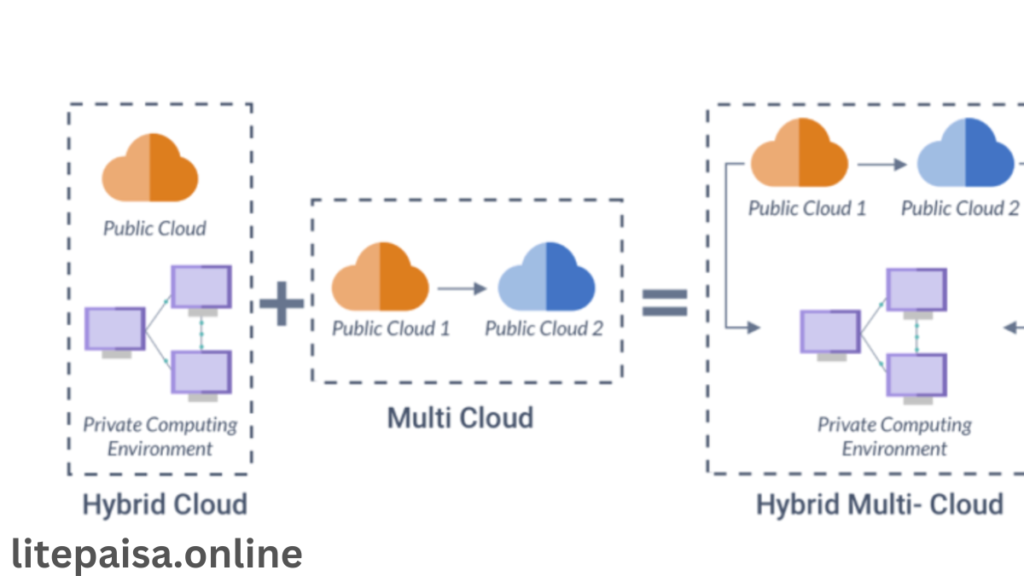
We’re witnessing a significant shift in how organizations approach cloud computing. The adoption of multi-cloud and hybrid cloud strategies has become increasingly prominent, driven by the need for greater flexibility, innovation, and vendor independence.
Benefits of multi-cloud approach
We’ve found that a multi-cloud approach offers several compelling advantages. By leveraging services from multiple cloud providers, we’re able to distribute our workloads more effectively, making us better equipped to handle service disruptions and manage our data. This strategy also allows us to boost cost efficiency by selecting the most suitable services from each provider based on our specific needs.
One of the most significant benefits we’ve experienced is the enhanced flexibility. We’re no longer constrained by a single ecosystem, which allows us to cherry-pick the best services for each task. For instance, we might use one provider for high-performance computing and another for cost-effective data storage.
Moreover, we’ve noticed improved security through this approach. By distributing our data and applications across multiple platforms, we’ve eliminated the risk of a single point of failure. If one cloud provider faces a security breach, our critical assets remain safe on other platforms.
Hybrid cloud adoption trends
We’re seeing a clear trend towards hybrid cloud adoption. According to Gartner’s projections, by 2025, about 80% of enterprises will shift towards solutions like colocation, hosting, and utilizing various cloud services. Cloud Future Trends this shift is driven by the need to balance on-premises and cloud resources effectively.
In our experience, hybrid cloud infrastructure offers a more balanced approach to computing resources. It enables us to tailor unique blends of public and private storage solutions to suit our precise needs. For instance, we can maintain sensitive data in a private data center while leveraging public clouds for scalable, on-demand resources.
Interestingly, we’ve observed that the data center isn’t “dead” or dying. While we’re spinning up new workloads in the cloud, we’re not decommissioning data center-centric workloads at the same rate. This is leading to a dilution of data center versus cloud usage rather than a complete migration.
Cloud management challenges
Despite the benefits, we’ve encountered several challenges in managing multi-cloud and hybrid cloud environments. The complexity of these setups can be daunting. We’ve had to navigate different interfaces, standards, and processes unique to each cloud provider.
Security and compliance have been significant concerns for us. Ensuring consistent security measures across various cloud platforms has required careful planning and implementation. We’ve had to apply standard policies and governance models to enforce uniform security protocols across our multi-cloud environment.
Another challenge we’ve faced is the integration of different cloud services. Achieving seamless data and workflow management across multiple platforms has required a strategic approach to data management and application deployment.
Lastly, we’ve found that managing costs in a multi-cloud environment can be complex. While it offers potential for cost optimization, it also requires careful monitoring and management to avoid unexpected expenses.
Cloud Security and Compliance Cloud Future Trends
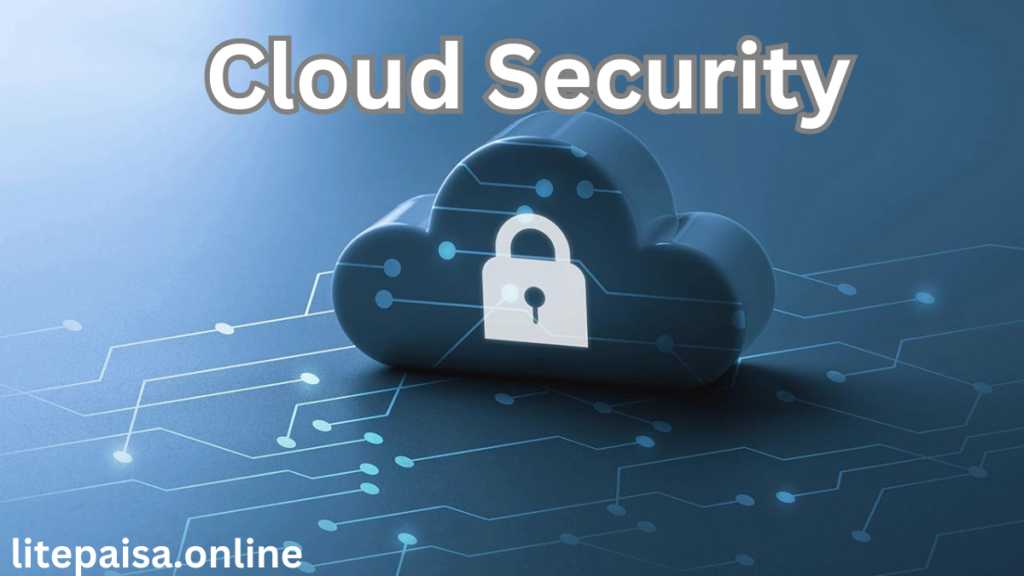
We’re witnessing a significant shift in cloud security and compliance as we move into 2024 and beyond. The evolving cybersecurity landscape has made it crucial for us to adopt advanced strategies to protect our data and maintain regulatory compliance.
Advanced encryption techniques
As we’ve seen from recent breaches in large enterprises like Rite Aid, Ticketmaster, and AT&T, the need for advanced encryption technologies has never been more critical. We’re particularly excited about the emerging trends in software-based encryption that are shaping the cryptology space.
One of the most promising technologies we’re exploring is homomorphic encryption. This technique allows us to process data without decrypting it first, which is a game-changer for securing data in use or in motion. We’ve seen its growing adoption in sectors like finance and healthcare, where data privacy is paramount.
Another innovative approach we’re implementing is honey encryption. This mechanism deceives attackers into believing they’ve successfully hacked the codebase, providing an additional layer of security against brute force attacks. We’ve found it particularly useful in protecting cloud storage and big data.
Regulatory compliance in the Cloud Future Trends
Ensuring regulatory compliance in the cloud has become increasingly complex. We’re navigating various compliance requirements such as MITRE ATT&CK®, CIS, NIST, and ISO, as well as regulations like GDPR, FedRAMP, and HIPAA. It’s crucial for us to implement robust security measures, conduct regular audits, and maintain continuous monitoring to safeguard against breaches and ensure regulatory alignment.
We’ve found that one of the key challenges in cloud compliance is data residency. Most data protection laws mandate hosting personal data within permitted territories, which necessitates careful selection of cloud regions. To address this, we’re adopting a multi-cloud strategy to adequately cover all regulated data.
AI-powered threat detection
We’re leveraging the power of Artificial Intelligence (AI) to enhance our threat detection capabilities. AI algorithms excel at identifying unusual patterns and behaviors within large datasets. Cloud Future Trends allowing us to detect potential threats that traditional signature-based systems might miss.
We’ve implemented AI-driven systems that automate the process of threat hunting, continuously scanning our networks for signs of malicious activity. This automation has freed up our human analysts to focus on more complex tasks and significantly reduced the time it takes to identify and respond to threats.
One of the most valuable aspects of AI in our security strategy is its predictive analysis capability. By analyzing past incidents, our AI systems can anticipate future attacks, allowing us to take proactive measures to strengthen our defenses. Cloud Future Trends this predictive capability is crucial for staying ahead of cybercriminals who continually adapt their tactics.
Conclusion
As we look ahead, the future of cloud computing is shaping up to be truly exciting. The integration of AI and machine learning, the rise of edge computing, and the growing popularity of multi-cloud strategies are having a profound impact on how businesses operate and innovate. Cloud Future Trends these advancements are not just changing the tech landscape; they’re opening up new possibilities to boost efficiency, enhance security, and drive growth across various industries.
Read More: Lite Paisa




